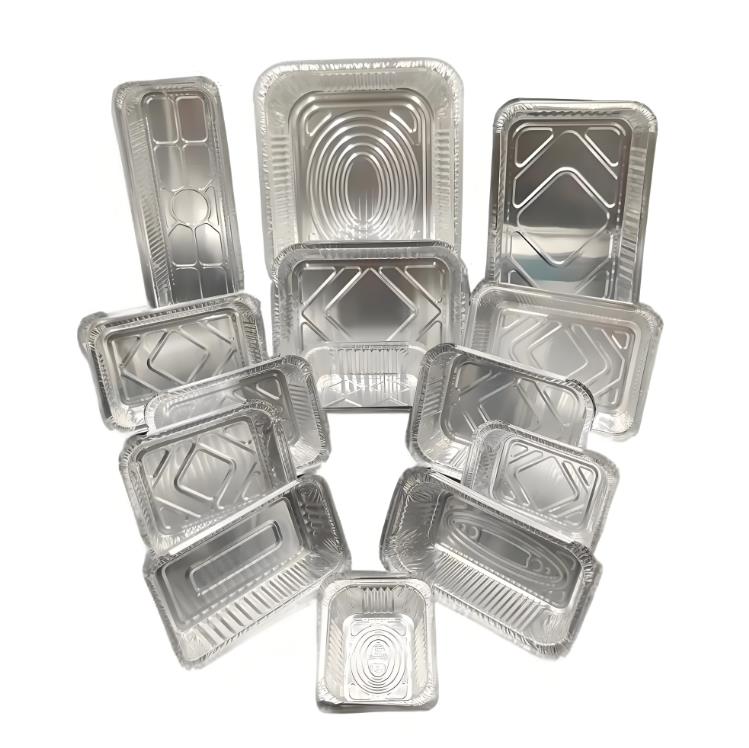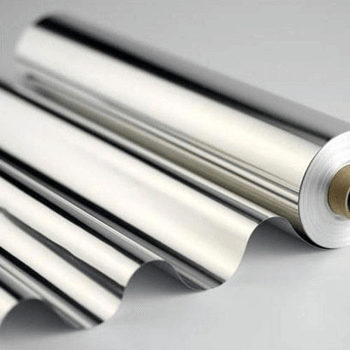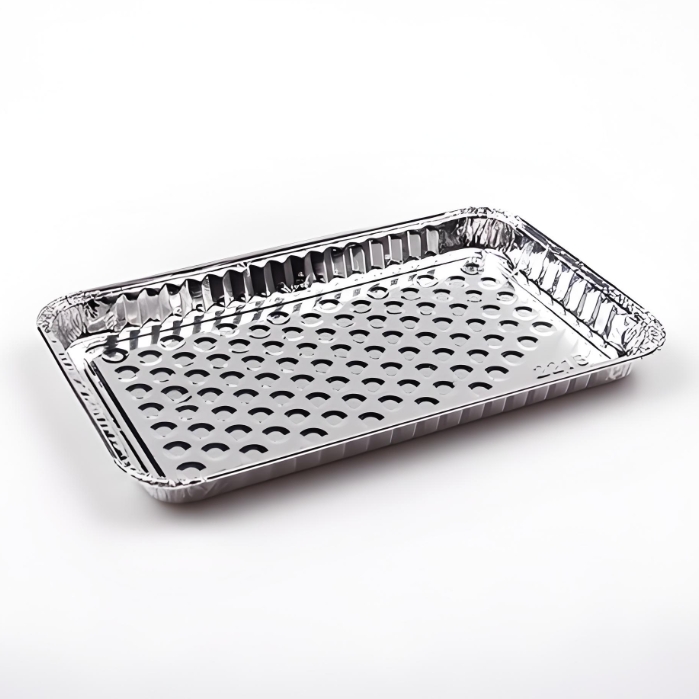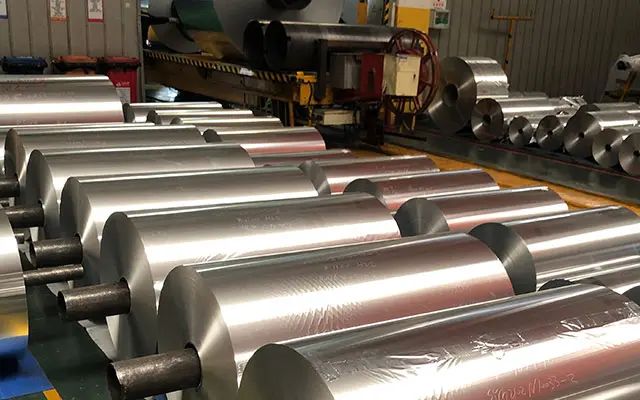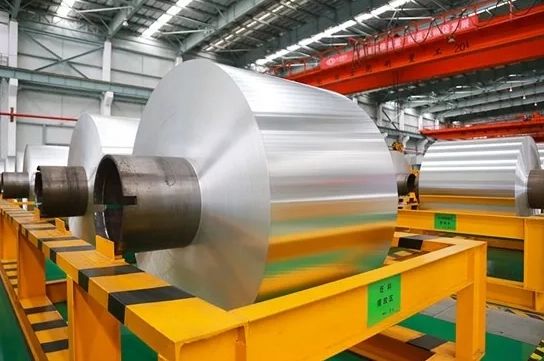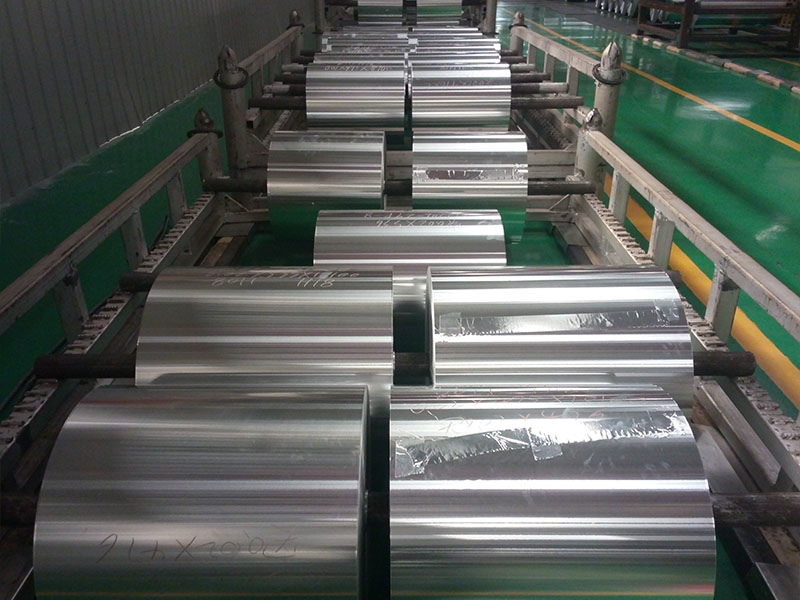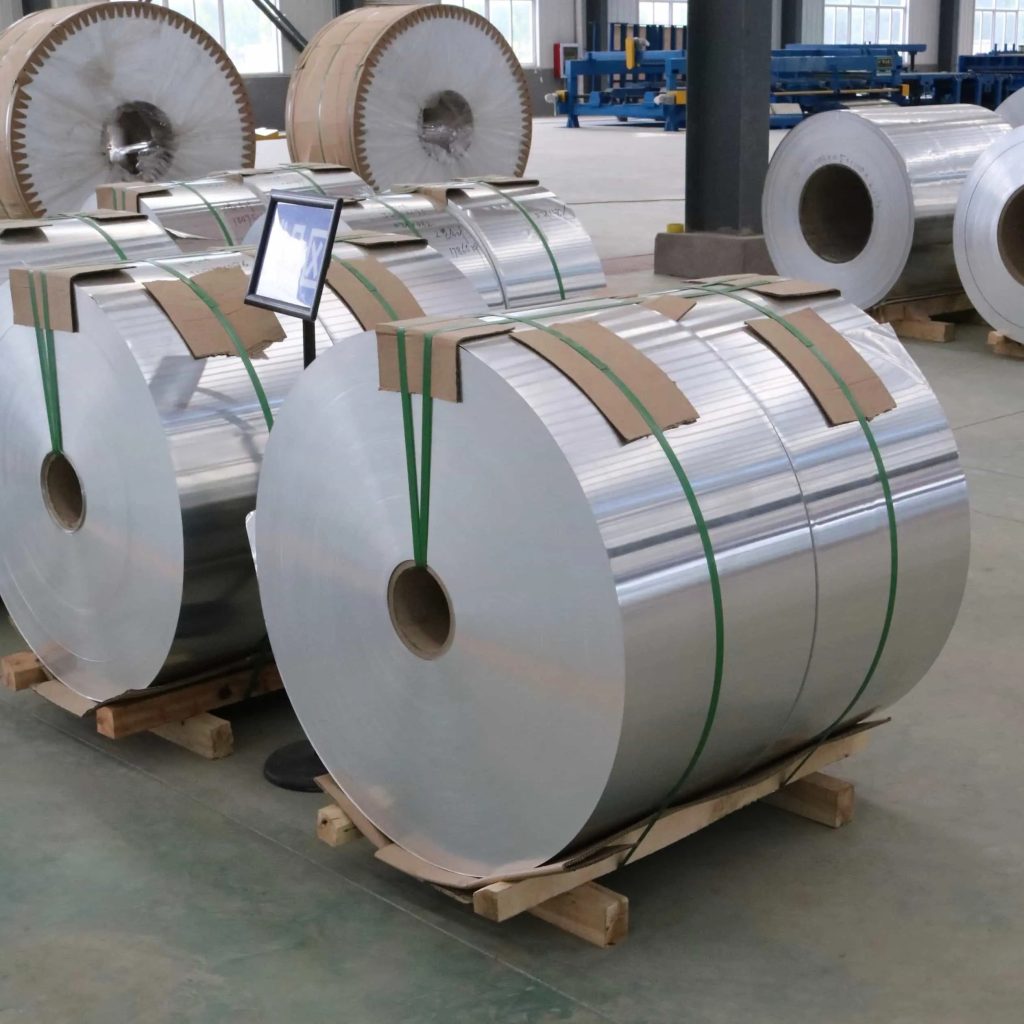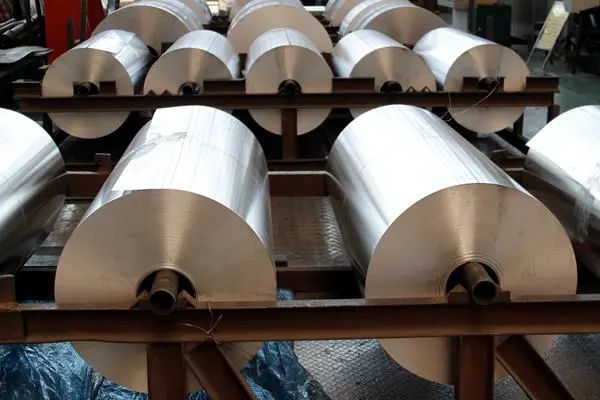Can You Put Aluminum Foil In Air Fryer?
Air fryers are now popular appliances in kitchens of today, because of their advantages in terms of “oil-free, low-fat, and fast cooking”. Aluminum foil, a popular cooking aid can solve issues like food sticking, oil staining on the fryer’s basket as well as preserving freshness of food. However, many people are skeptical when they use the two together–“Can put aluminum foil in an air fryer?” The reason for this is not just the conflict between practical demands for usage, but also concerns about the safety risk.
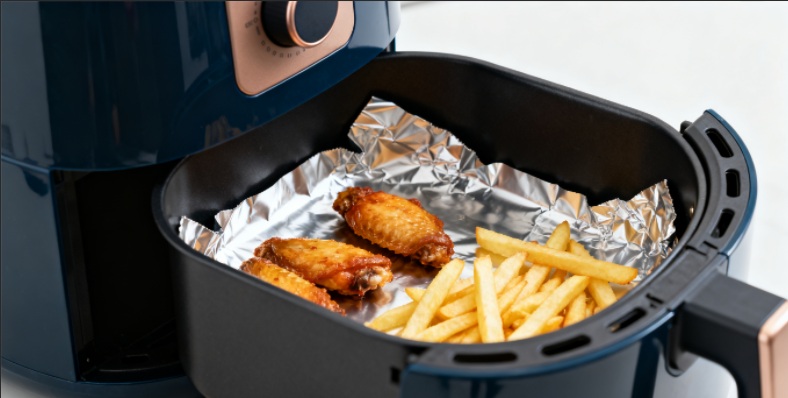
Why So Many Wonder: Can Air Fryers Use Aluminum Foil?
Conflict Between Convenience Demands and Usage Doubts
The role of aluminum foil in cooking is widely recognized by users: wrapping chicken wings or fries prevents surface burning; lining the basket bottom reduces oil residue; it can even be shaped into “small trays” to hold loose ingredients (such as nuts or vegetable pieces). But the core working principle of air fryers—”hot air circulation heating”—differs from traditional ovens. Users inevitably worry: Will aluminum foil block hot air circulation and affect cooking results? Will it react with internal fryer components and cause malfunctions?
Panic from Unverified Online Claims
Claims like “Heating aluminum foil releases aluminum ions that cause cancer with long-term consumption”, “Aluminum foil touching the air fryer’s heating tube causes fires”, and “Using aluminum foil damages the fryer’s coating”—such unsubstantiated statements spread widely on social platforms and housekeeping forums, making many users avoid aluminum foil. Particularly in families with aged or children, sensitivities towards “food safety” is higher. Even if they would like to cook with aluminum foil for cooking but they do not use it due to concerns about safety.
Know Your Air Fryer Type
Air fryers differ in internal structures and heating methods, leading to differing “compatibility” with aluminum foil. You must first identify your air fryer type before deciding if aluminum foil can be used.
Hot Air Circulation Air Fryers
Over 80% of household air fryers on the market fall into this category. Their working principle is “bottom heating tube generating heat + top fan driving hot air circulation”—the continuous hot air flow quickly crisps the food surface. These models have a wide hot air circulation path; as long as aluminum foil is placed properly without blocking air outlets, it can usually be used safely.
Light Wave Heating Air Fryers
A few high-end air fryers use “light wave tube heating” technology, which heats food directly by emitting infrared rays—faster and more concentrated. However, the surface temperature of light wave tubes is much higher than traditional heating tubes, requiring better heat resistance of contact materials. Insufficiently thick or poorly positioned aluminum foil may deform and melt due to heat localized or cause damage to the tube. So, ensure that you make use of aluminum foil with care when working with these models. Also, be certain to follow the directions in the instruction manual.
3 Conditions for Using Aluminum Foil in Air Fryers
Experiments in food science and tests conducted by the industry for home appliances prove that aluminum foil that is standardized is safe for use with air fryers, if utilized in a safe manner. It is important to note that “usable” does not necessarily mean “usable arbitrarily”–the 3 fundamental security requirements must be met to maintain safety and convenience.
Condition 1: Suitable Aluminum Foil Material and Specifications
Material Selection: Select “food-grade aluminum foil” and stay clear of industrial-grade foil. Food-grade foil contains more than 99.5 percent pure aluminum, treated with anodization to create a solid oxide film (preventing the release of aluminum ions when it is heated) without harmful impurities, such as mercury and lead, in accordance with food safety standards of the nation. Be sure to look at “food contact” labels; Avoid low-cost, non-labeled products. Industrial-grade foil, used for packaging/insulation, contains heavy metals and residues, making it unsafe for cooking.
Thickness Requirements: Select 0.01mm-0.02mm home-use foil. Foil that is thinner than 0.01mm is more prone to getting removed or clinging to food items; a thickness greater than 0.02mm reduces the transfer of heat (causing undercooked food to be undercooked) and causes hot spots to form locally. The suggested 0.012mm-0.018mm blends the ability to shape as well as heat conductivity.
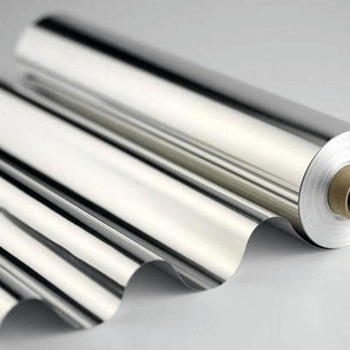
Condition 2: Proper Placement to Avoid Blocking Air Circulation
The hot air circulation is essential to the air fryer’s performance. Inhibiting airflow results in food being undercooked or excessive heat.
The basket should be left at minimum 1/3 of the container open to allow airflow. Don’t completely cover the bottom of the basket. Cut foil to 1/2-2/3 of the size of your basket or form to form a tray that you place in the middle.
Avoid sharp Edges Flatten edges to avoid scratching the non-stick coating on the fryer or sparking (if contact with metallic parts). Fold in the shape of a “shallow plate” (1-2cm high edges) to protect yourself.
Stay clear of air Vents: Examine vent locations (top/bottom/side). Make sure that the foil doesn’t cover vents on the bottom or block top vents with trays that are too high.
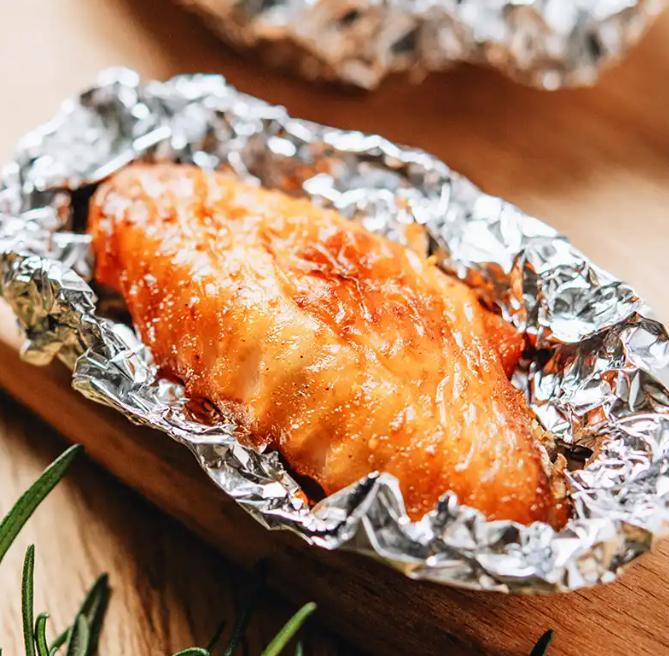
Condition 3: Control Temperature and Time to Prevent Overheating
Aluminum foil is able to withstand up to 220°C However, air fryers usually have a temperature range of between 120 to 220. Excessive temperature/time causes foil to deform or melt.
Maximum Temperature: Limit it below 200. The temperature of air fryers can fluctuate (e.g. old heating pipes) however 200 would be a safe margin. Food items which require high temperature (e.g. steaks that require at minimum at least 210) select mats made of silicone which are resistant to heat.
Time Control: Be sure you check every 15 minutes to determine the quantity of heat that has circulated over the course of 30 minutes. A brief heating time (10-20 hour) is safe. However, longer time periods (e.g. roasting chicken) should be checked for the deformation of foil as well as flipping of the ingredients. Reposition the foil if edges are curled near heating tubes.
Incorrect Uses of Aluminum Foil in Air Fryers & Safety Tips
Even if all three above requirements are fulfilled the incorrect operation that follows can result in safety hazards and could impact the life of the fryer as well as food security. It is recommended to avoid them.
Mistake 1: Using Damaged/Wrinkled Non-Food-Grade Foil
The potential for damage to the foil is that it may shed its oxide coating as it releases more aluminum-ion ions from the food products that are acidic or alkaline (e.g. tomatoes, tomatoes, lemons, etc.)) and cause scratches on the non-stick coating. The wrinkles cause hot spots within the area which melt the foil, and cause the food to ignite. fat substance. Food-grade aluminum foil (industrial) contains heavy metals and residues that can cause food poisoning.
Tips: Always verify the foil prior to using it and then dispose of any damaged or non-labeled (non-food-grade) foil.
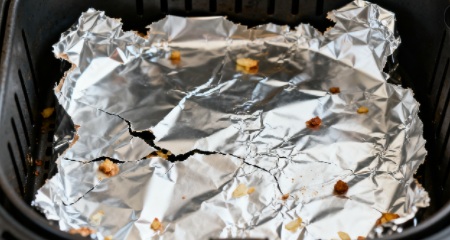
Mistake 2: Foil Touching the Fryer’s Heating Tube/Inner Wall
The potential risk associated with heating tubes is greater than 300 degrees. Direct contact with the tube melts the foil (causing burning odors) or cracks the tube. The foil’s edges rubbing against the walls of the tube peel off the coating of nonstick (risking the exposure of).
Tips: Be sure to keep aluminum foil at least two centimeters away from the walls or heating tubes. Utilize small foil trays for small fryers.
Mistake 3: Sealing ingredients too tightly with Foil
Dangers The foil that’s sealed will hold in the steam of hot food (e.g. wings of a bird). ).The pressure buildup could cause explosions on the foil, spilling oil and burning hands.
Tips: Poke three small holes (1mm diameter) in the foil. Leave a gap of 1 or 2 for steam to escape.
Conclusion
Air fryers and aluminum foil make the perfect pair. It is important to adhere to “food-grade material, proper placement, temperature/time control” to make use of foil for less sticking and more easy cleaning. If you are cooking food that is not suitable for air fryers (e.g. high-heat steaks) opt for baking mats with heat resistance as well as silicone mats. Your safety as a family is of paramount importance. A standardized approach ensures that air fryers will be a reliable kitchen tool.
Related Products

